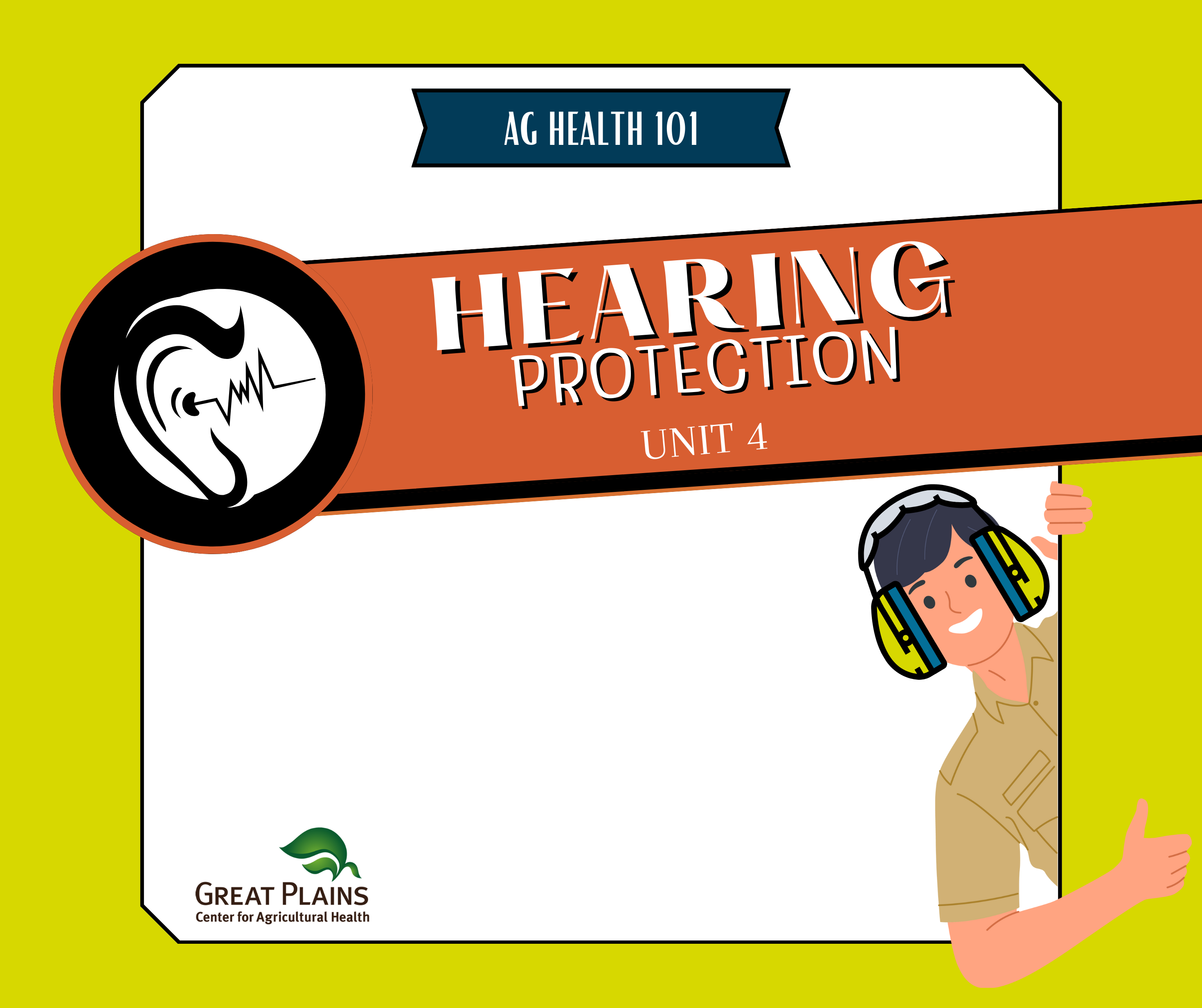
Unit 4.
Hearing Protection
This unit was designed to help you understand how a lifetime of noise exposure results in hearing loss, which is not unique to farmers but which is important because there has been historically low adoption of hearing protection by farmers. You will understand how to measure and interpret sound levels from smartphone apps, understand options to reduce exposures on the farm, and understand how to select and use hearing protection. Importantly, we have information about having conversations with farmers about the risk of hearing loss on the farm. This unit has a “bonus chapter” if you like math and want to know how to assess a full 8-hour exposure from noise samples on the farm, to take your working knowledge to the next level.
Note: We offer some advanced classes to help you with understanding noise exposure and hearing protection if you are interested.
Chapter 1: What is Too Loud?
This first chapter introduces you to the units of sound and describes some of its interesting features. We also introduce how sound damages the ear, affecting our ability to hear, from both short duration exposures (e.g., explosions) and from a lifetime of exposures at work.
What Is Too Loud?
Chapter 2: Assessing Hazards with Smartphone
In this chapter, we will give you simple tools to help evaluate, in real time, whether a sound level is at a level where hearing should be protected. The critical level of “are we at 85 dB” will be explained.
Assessing Hazards with Smartphone
Chapter 3: Hearing Loss Prevention Options
Hearing Loss Prevention Options
Chapter 4: Hearing Protection: Selection and Use
If sound reduction options from Chapter 3 do not work, hearing protection is recommended when exposures exceed 85 dB. This chapter walks you through the benefits and cautions associated with three categories of hearing protection devices: muffs, reusable plugs, and formable plugs.
Hearing Protection: Selection and Use
Chapter 5: Hearing Protection: NRR and Fit Checks
Once you understand the types of hearing protection available to select from, we focus on limitations of these devices and how to recommend different devices for different wearers. We discuss tools for testing how well a person can insert their own earplugs to get customized information on what is best for them.
Hearing Protection: NRR and Fit Checks
Chapter 6: Hearing Protection – Communicating the Risk
Hearing Protection - Communicating the Risk
Bonus Chapter: Calculating 8-hr Exposures
This optional bonus chapter contains information on what to do with sound level measurement you may take in the field. It is math intensive, so we have made this an optional chapter. But, if you want to know how much sound someone is exposed to over a work day given the time someone spends doing different loud tasks, this is the chapter for you.
